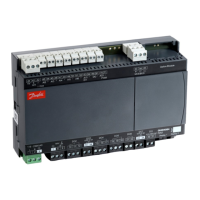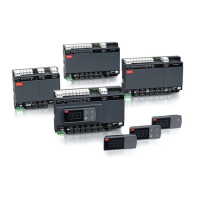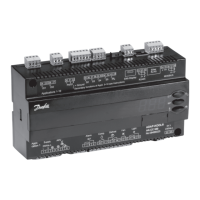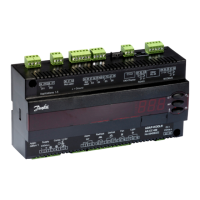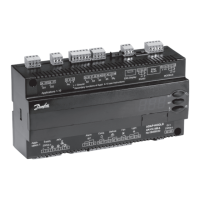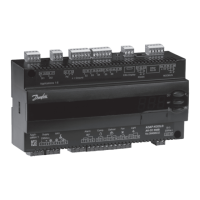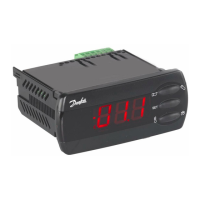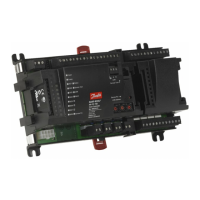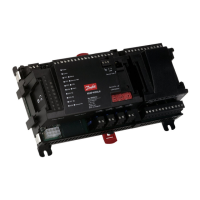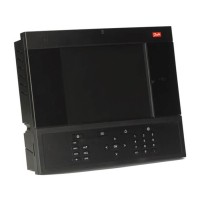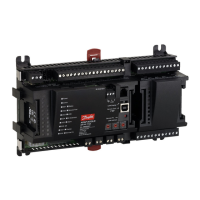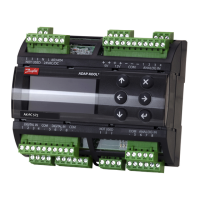Introduction
Application
Refrigeration appliance control with great exibility to adapt to refrigeration appliances and cold storage rooms.
Advantages:
• Control of Thermostatic Expansion Valve (TEV) and Electronic Expansion valve(EEV) applications
• Quick set-up with predened settings
• Easy conguration and service using a mobile app with Bluetooth
• Adaptive Minimum Stable Superheat (MSS) control is performed with lowest possible superheat
• Allows the suction pressure to be raised several degrees
• Adaptive Liquid Control (ALC) can be performed with superheat down to 0 degrees on transcritical CO
2
systems
with liquid ejectors
Principle
The temperature in the appliance is registered by one or two temperature sensors which are located in the air ow
before the evaporator (S3) or after the evaporator (S4) respectively. A setting for thermostat, alarm thermostat and
display reading determines the inuence the two sensor values should have for each individual function.
The temperature of the evaporator is registered with the S5 sensor which can be used as a defrosting sensor.
In addition to the output of the electronic AKV injection valve, the controller has relay outputs which are dened by
the application setting
Figure 1: AK-CC55 with evaporator, AKV valve and sensor positions
Danfoss
84B3281
S5
S3
S4
S2
P
AKV
© Danfoss | Climate Solutions | 2022.08 BC365212986197en-000201 | 5
AK-CC55 Compact
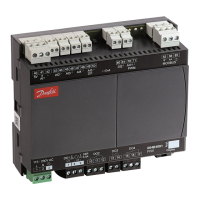
